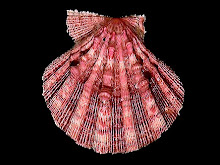More About Bioaccumulation and Biomagnification
This was an article written by this author and posted on Turtle Forum:
If you are unfamiliar with basic ecology, you may wish to review this material:
Environmental Biology - Ecosystems
"On January 24th, the Bush Administration proposed changes to pesticide usage that could undermine the Endangered Species Act. At this time the Environmental Protection Agency (EPA) must consult with other wildlife agencies to assess the affect of new pesticide use on endangered species prior to their approval for use. The new proposal will exclude experts from giving their own consultation on the effects of new pesticides." (Defenders of Wildlife)
"The President’s policy benefits the chemical industry at the expense of the environment," said Defenders of Wildlife president Rodger Schlickeisen. "It is another example Americans paying the price as the President bows to the wishes of industry." (Defenders of Wildlife)
"Pollution and pesticides are among the greatest threats to wildlife and habitat," said Patti Goldman, Managing Attorney for EarthJustice’s Northwest Office. "The Bush administration’s policy weakens long-standing regulations that protect species and will only lead to more harmful chemicals in our environment." (Defender's of Wildlife)
With that said, bioaccumulation is the accumulation of a toxic chemical in various tissues of a living organism. This refers to how pollutants are known to contaminate the food chain, which we are a part of, whether or not considered at the top (as if this means we are immune to bioaccumulation). Biomagnification is an increase in concentration of a pollutant from one link in a food chain to another. Together they mean that even small concentrations of chemicals in the environment can find their way into organisms in high enough dosages to cause problems. In order for biomagnification to occur, the pollutant must be:
long-lived
mobile
soluble in fats
biologically active
If a pollutant is not active biologically, it may biomagnify, but most scientists really don't worry about it much, as if apparently lacking solid data on the effects of such known occurences of bioaccumulation and biomagnification is justification for no concern - data using levels of the pollutant found in our contemporary environs, not through short-lived overdose and exposure ( as is used is current laboratory regimens). And filling those data gaps through individuals or organizations paid to do the study in a non-independent manner is cause for alarm (let's say the FDA funds a group to do it, rather than the EPA; the group works for the chemical manufacturer and "cooks" the data). Talk about junk science!
A fine example of biomagnification is DDT, also known in the scientific world as dichloro diphenyl trichloroethane, and falls into the class of chemicals known as chlorinated hydrocarbons, a class with many other chemicals that follow the characteristics necessary for biomagnification. Many of us are well-aware of the problems in Falconiformes that DDT caused, like shell-thinning and little or no population fecundity. The influential book written by Rachel Carson, Silent Spring, which focuses on the negative fecundity effectuations DDT causes in orniths, Falconiformes in particular, is well known to ornithologists who focus on functional anatomy and chemistry. Even nearly 40 years later, those in chemical and agricultural industries still react in a bad way to Carson's literature.
A PDF of the document outlined in this argument (actual Federal Registry documentation).
Pesticide used only in Florida kills birds (w/Petition)
Leopard Frogs and biomagnification:
Popular Weed Killer Feminizes Native Leopard Frogs Across Midwest
Atrazine-Induced Hermaphroditism at 0.1 ppb in American Leopard Frogs (Rana pipiens): Laboratory and Field Evidence
Deformed Frogs in Minnesota






2 Comments:
Hi,
We have just added your latest post "More About Bioaccumulation and Biomagnification" to our Directory of Environment . You can check the inclusion of the post here . We are delighted to invite you to submit all your future posts to the directory for getting a huge base of visitors to your website and gaining a valuable backlink to your site.
Warm Regards
greenatmos.com Team
http://www.greenatmos.com
Wow, thanks for the wonderful comments :) I will be certain to begin adding more of my observations in the near future!
Warm and sincere regards,
Kirke
Post a Comment
<< Home